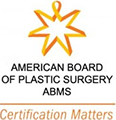The History of Botox® Cosmetic
October 9, 2014
anti-aging treatments, Atlanta facial rejuvenation, Atlanta plastic surgery, Cumming cosmetic surgery, Cumming plastic surgeon, non invasive cosmetic treatments, treating crow’s feet, treating facial wrinkles
No one can argue that the use of Botox® cosmetic to help alleviate the signs of facial aging has become incredibly popular. In 2013 alone, over 6.3 million treatments were preformed in the United States with Botulinum Toxin Type A, the active ingredient in cosmetic injectables like Botox® and Dysport®, and that number continues to rise every year. However, despite its incredible popularity, many don’t know the fascinating history behind the development of this extremely versatile facial rejuvenation procedure.
1820’s – Dr. Justinus Kerner studies a batch of improperly prepared blood sausages responsible for the death of several dozen Germans. His experiments lead to a better understanding of the neurological symptoms of food-borne botulism (drooping eyelids, difficulty swallowing, muscle weakness, and if left untreated, paralysis and respiratory failure).
1890’s – While investigating an outbreak of botulism, Dr. Emile Pierre van Ermengem of Belgium is able to make a connection between botulism and a spore-forming bacterium he named Bacillus botulinus (later renamed Clostridium botulinum).
1953 – Physiologist Dr. Vernon Brooks discovers that injecting small amounts of botulinum toxin into a hyperactive muscle blocks the release of acetylcholine from motor nerve endings, causing temporary “relaxation” and reducing involuntary muscle spasms.
1978 – After several years of injecting botulinum toxin type A into monkeys in an attempt to discover if its muscle relaxing effects might help in the treatment of strabismus, or crossed eyes, Dr. Alan B. Scott receives FDA approval to inject tiny amounts of botulinum toxin into human volunteers.
1988 – The pharmaceutical company Allergan Inc. acquires the rights to distribute Scott’s batch of botulinum toxin type A, and begins conducting additional research. Eventually, it is discovered that the drug can also provide patients with temporary relief from facial spasms, neck and shoulder spasms, and even vocal cord spasms.
1989 – The FDA approves botulinum toxin type A for the treatment of both strabismus (crossed eyes) and blepharospasm (spasms of the eyelid muscle). Allergan introduces it to the market under the brand name Botox® Cosmetic.
1992 – After noticing that her blepharospasm patients were starting to lose their frown lines, Canadian ophthalmologist Dr. Jean Carruthers, and her dermatologist husband, publishes a study in the Journal of Dermatologic Surgery and Oncology stating that though temporary, “treatment with C. botulinum-A exotoxin is a simple, safe procedure” for the treatment of brow wrinkles.
1997 – Botox® use increases so rapidly that the country’s supply is temporary exhausted until a new batch receives FDA approval.
2002 – FDA approves Botox® Cosmetic (onabotulinumtoxinA), the same formulation as Botox®, for use in alleviating moderate to severe frown lines between the eye brows.
2004 – FDA approves Botox® for the treatment of severe underarm sweating that does not respond well to topical medicines.
2006 – Botox® sales soar past the $1 billion mark, with cosmetic uses accounting for about half of sales.
2010 – FDA approves Botox® therapy for increased muscle stiffness in elbow, wrist, and finger muscles with upper limb spasticity. Later that year, Botox® becomes the first medicine to be approved by the FDA specifically for the prevention of headaches in adults who suffer from chronic migraines.
2014 – Botox® Cosmetic receives FDA approval for the temporary treatment of moderate to severe crow’s feet, also known as lateral canthal lines.
If you have any questions about Botox® cosmetic or are interested in any of the treatments that I offer, please contact us today to schedule a consultation. Additionally, Atlanta Plastic Surgery, P.C. provides a variety of options for financing, including Care Credit®, to assist you. Don’t forget to connect with me, Dr. Hunter Moyer, on Facebook, Twitter, and Google+ for the latest plastic surgery news.









